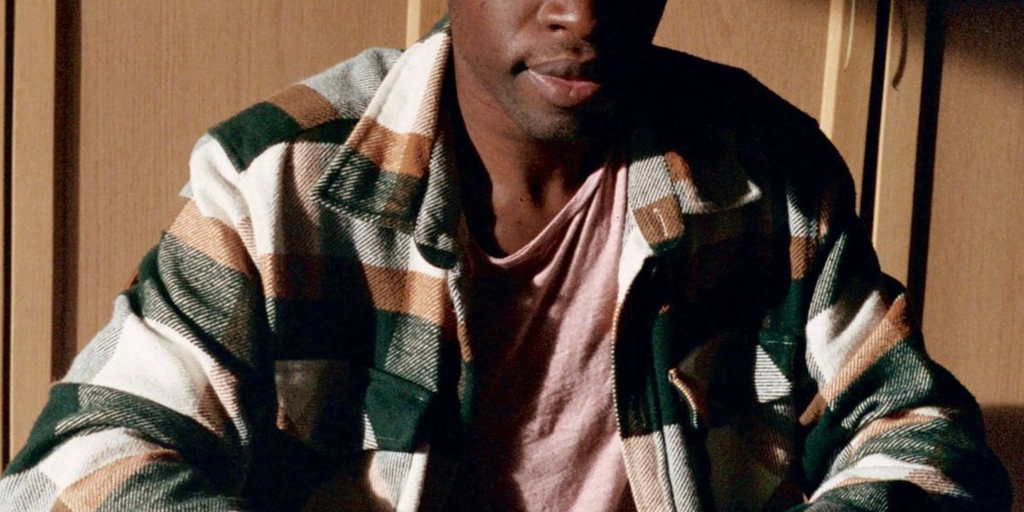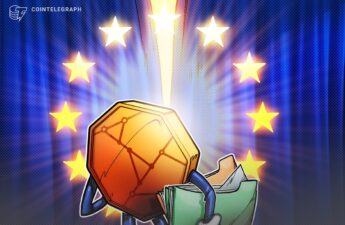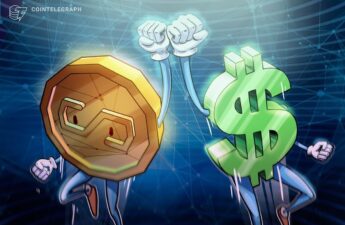Since launching this spring, the Los Angeles County Museum of Art’s “Remembrance of Things Future” program has invited numerous digital artists to select iconic works from the museum’s permanent collection and riff on them with the aid of experimental technologies.
Today marks the debut of the series’ fifth entry: “Distance,” a meditation by the French digital artist William Mapan on Paul Klee’s 1914 watercolor, “In the Kairouan Style, Transposed in a Moderate Way.”
The collection will consist of 250 generative artworks—birthed from a custom algorithm crafted by Mapan—that will only realize their final form once minted on the Ethereum blockchain as NFTs.
A sample output of “Distance.” Courtesy: William Mapan/Cactoid Labs
In contrast with past installments of LACMA’s “Remembrance” series, launched with the help of blockchain consultancy Cactoid Labs, “Distance” is not, on its face, so obviously of a different age than the work that inspired it.
Mapan’s digital outputs have the look and texture of paintings; on closer glance, though, the patterns that comprise them are meticulously arranged, combined, and smoothed together at a scale that might lead a viewer to question their true nature.
“I always try to balance on this thin line between the digital and the physical,” Mapan told Decrypt. “I think you have to question yourself when you see my pieces, because you don’t know.”
To achieve this effect, Mapan manually created custom physical paint colors and then worked to recreate them digitally with JavaScript. All of the code Mapan then used to simulate the spread, splatter, interplay, and patterning of that paint on a virtual canvas, he also custom built from the ground up with JavaScript—an unusually arduous process through which to create highly textured and intricate works of digital art.
Another sample output of “Distance.” Courtesy: William Mapan/Cactoid Labs
“There are people who have tried to make code look like a painting,” Lady Cactoid, the pseudonymous co-founder of Cactoid Labs, told Decrypt. “That’s different from what William’s trying to do. William is trying to use code to paint.”
Mapan believes that by translating the painting process to the digital realm, he can tap into the rawness and humanity captured in manual painting, and amplify it with the guided power of automation.
“It’s mixing the best of both worlds,” Mapan said. “Color, feeling, mixture, texture, and at the same time, a randomness and precision that can make 10 million shapes in a row.”
The artist applied this technique, in this case, to relate both to Klee’s iconic color theory, and to the late Swiss-German painter’s experience of creating “In the Kairouan Style” while traveling in Tunisia just before the outbreak of World War I. The light of the North African landscape, seen for the first time, deeply affected Klee, and greatly informed his perception of color thereafter.
“In the Kairouan Style, Transposed in a Moderate Way,” by Paul Klee. Switzerland, 1914. Courtesy: LACMA
“In the Kairouan Style” appeared to Mapan as a view from above, of a new landscape seen with fresh eyes. That frame of reference brought the artist to his memory of moving, at the age of 16, from the suburbs of Paris to a tiny village near the rural town of Pithiviers. The exhilarating experience of taking in and processing so much open space for the first time had a defining impact on Mapan, one the artist related to Klee’s time in Tunisia.
“What does a view from above mean for me?” Mapan said. “It means landscape, it means green, it means countryside.”
The interrelation of small squares and longer, broader shapes in “Distance” thus puts compact urban aerial landscapes into conversation with the rolling, infinite openness of rural terrain. The resulting composite, among other things, captures the potential of new settings to kindle perspective.
Another sample output of “Distance.” The final form of the collection will materialize at minting. Courtesy: William Mapan/Cactoid Labs
Harnessing computer code to replicate, tweak, and reshape those overlapping landscapes across untold millions of potential iterations, however, has also brought a new element to Mapan’s work. New technologies have allowed the artist to work from a palate of potential outputs that would have otherwise taken lifetimes to create and sift through.
When the 250 NFTs that comprise “Distance” are minted, and subsequently generated by Mapan’s algorithm, the artist will see those pieces realized in their final form for the very first time.
There’s another kind of distance, then, one that’s recently come to impact public perception of works containing automated elements: that between artist and artwork. In many respects it’s a new one, likely unthinkable to artists like Klee a century ago. But perhaps it holds the same potential as any other form of detachment, to invigorate and reshape one’s point of view.
Stay on top of crypto news, get daily updates in your inbox.
Source: https://decrypt.co/155981/lacmas-latest-nft-experiment-brings-fresh-eyes-to-paul-klees-art



